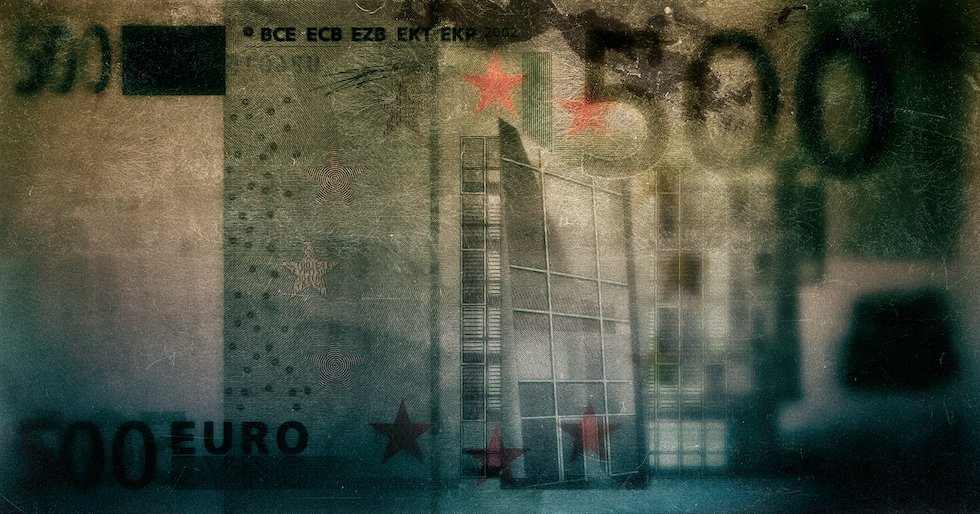
Nothing but
by Christos Tombras
On the morning of June 17, a number of curious photos of Boyko Borisov, the Bulgarian Prime Minister, leaked to the press. One had Borisov snoozing in bed in the early hours of some morning, with a gun handy on his bedside table. In another, stacks of 500 euro notes were visible from inside the drawer of the bedside table, now ajar.
No-one would be very happy to have their sleeping pictures leaking to the press, even with no gun and no cash. Understandably, Borisov was furious. In a hastily organised press conference he tried to put the blame on his main political adversary, Rumen Radev, an ex-Commander of the Bulgarian Air Force, now President of the Bulgarian state. Borisov alleged that Radev used a drone to stalk him (the two are neighbours in an affluent neighbourhood of Bulgaria’s capital, Sofia).
Responding to the allegations, Radev admitted that he does indeed have a drone. He’d rather not comment on Borisov’s “paranoid fantasy”, though. “My imagination”, he said, “has its limits”.
*
It was not clear what had happened. Speculation continued for some days, but eventually the whole story died down under the avalanche of other news coming from Bulgaria. After a whole month of peaceful but persistent protests in major Bulgarian cities, the survival of Borisov’s government is now less than certain.
The thing is, nobody remembers the pictures.
Anyway, I was not planning to write about Bulgarian politics. My focus, as promised last month, was going to be truth. I just thought I’d take Borisov’s photos and the relevant speculation as a starting point.
*
So, what’s the story? Who took the pictures?
Difficult to say. The high tensions between the two men, Borisov and Radev, were no secret. And Radev has a drone, that was no secret either. If it was just a case of finding a person who has both the appropriate technology (namely, the drone) and a possible motive, then we could say we have a suspect.
But, do we?
For example, let’s say that we have established that President Radev has both the equipment and necessary know-how, plus a strong motive to take pictures that would somehow embarrass Borisov. Is this enough to conclude that Radev is the person behind the leaked pictures? Have we found truth?
No, not really. At most, we have formulated a hypothesis. A plausible one, maybe, but still just a hypothesis.
Further questions readily follow. For, even if a drone could conceivably be instructed to enter a bedroom and take pictures, we would need to assume further that it would have to be an advanced, silent drone, or that Borisov sleeps a very very deep sleep indeed. Or both. Still, it would be difficult to explain the picture with the money. Was this also taken by the drone? We would need to assume that we have a very industrious drone, indeed, one equipped with the necessary intelligence and dexterity to open drawers and photograph their interiors.
A bit far-fetched. We cannot but conclude that, apart from any drone, there must have been at least one more person involved, someone with a camera and access to Borisov’s premises. Which then makes our initial hypothesis of the drone-operating President a bit less believable.
The plot thickens.
*
As soon as you look at it, truth reveals itself to be a much more complicated and multifaceted problem than we originally thought.
At first you think you only have to keep your biases at bay, and keep your eyes open to evidence. But then it turns out that you need something more than eyes. You need an interpretative framework which would help you formulate a hypothesis about all that you see.
Your hypothesis, then, would need to be refined; you would need to make sure that it contains as few extraneous assumptions as possible and that it takes little for granted. You would trim it, so to speak, with Occam’s razor.
Even then you would not be done. You’d also need to make sure that your hypothesis works well vis-à-vis a network of further, not directly related hypotheses that were already at your disposal, describing your whole world in a way that makes sense to you. You would then have to check that combined network for internal consistency. It would only be then that you would be able to claim that you are approximating some aspect of truth.
*
So, is our job done then? Is this all that it takes? Collecting evidence with no bias; formulating hypotheses using Occam’s razor; and checking for consistency with everything else that we (think we) know about the world?
Would that be enough to help us avoid the pitfalls of relativism?
Hmm.. It would be good if things were so simple. Unfortunately, they are not.
We speak about truth but we have not yet been careful enough to define properly what the term means.
What is truth? Why do we care at all?
This is still an open question.
tinyurlis.gdclck.ruulvis.netshrtco.de
مقالات مشابه
- Austin پیرس حفظ دامداری سرعت در به طرز وحشیانه ای شب داغ در رودخانه به نقل جاده سریع السیر
- پس از "مهاجرت به بحران': چگونه اروپا کار می کند برای حفظ آفریقایی در آفریقای
- McFeely: Cramer از دست دادن رگه با مغلوب ساختن پیشی جستن رشد می کند
- دوشنبه داغترین ژوئن 1 ثبت شده در فارگو, Grand Forks
- مرگ مواد شیمیایی
- آیا می خواهید درباره اسباب بازی بیشتر بدانید؟
- 'من به دنبال به جلو به این': Kirill Kaprizov آماده برای وحشی تصدی در نهایت به شروع
- روسیه christens کلیسای جامع — بدون پوتین استالین موزاییک
- هرالد آرا برای پیش فصل, نظرسنجی, همه, Missouri Valley فوتبال تیم کنفرانس
- 'دشت نوازندگان' فراهم می کند پخش مرحله دوم, مینه سوتا, نوازندگان